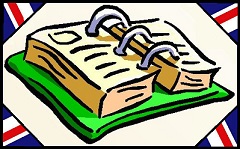THOMAS GRAY (1716 - 1771)
INTRODUZIONE (I PRIMI ROMANTICI):
La letteratura del periodo augusteo fu caratterizzato dal predominio della ragione contro i sentimenti e le emozioni. Ma ben presto questa tendenza cominciò a svanire, insieme con il crepuscolo del Classicismo.
I sentimenti e l'immaginazione iniziarono a fare di nuovo la loro comparsa, anche se il predominio della ragione era ancora forte.
In poesia, soprattutto, il conflitto tra ragione ed emozione era più evidente. E' molto difficile spiegare quali fossero le principali caratteristiche della poesia in quel periodo, perché erano presenti anche in periodi precedenti e rimasero durante i successivi.
Per questo motivo raggruppiamo tra i "primi romantici" i poeti che, per primi, mostrarono elementi che contrastavano con il Neoclassicismo .
Questi poeti cominciarono a mostrare un senso di fallimento e di angoscia e a sentirsi diversi da quegli scrittori che non avevano a cuore gli aspetti spirituali e morali della vita. Ma, purtroppo, in un periodo interessato alla vita sociale, c'erano pochi modi per esprimere sentimenti privati.
Per questo motivo essi iniziarono a cercare sollievo nella vita della gente di campagna. Dal momento che scoprirono anche il piacere della meditazione, questi poeti furono chiamati "elegiaci" .
Uno di loro fu James Thomson , che scrisse "Le stagioni". Un altro fu William Collins, che scrisse "Ode alla sera".
La natura è vista, da loro , come una dolce, gentile malinconia. Poi essi cominciarono ad amare i luoghi deserti, le tombe. Allora iniziò la "poesia da cimitero": fu chiamata in questo modo a causa delle sue immagini di morte. I principali poeti di questo nuovo tipo di poesia furono due ministri della chiesa: Edward Young e Robert Blair.
INTRODUCTION (THE EARLY ROMANTICS):
Augustan Age literature was marked by the predominance of reason against feelings and emotions. But soon this trend started to fade, together with the twilight of Classicism.
Feelings and imagination started to make their appearance again, even though the power of reason was still strong.
In poetry, above all, the conflict between reason and emotion was more evident. It’s very difficult to explain what the main features of poetry were in that period, because they were present also in previous periods and remained during the following ones.
For this reason, we group among the “early romantics” the poets who, for first, showed elements that contrasted with Neoclassicism.
These poets started proving a sense of failure and anguish, and feeling different from those writers who didn’t care about the spiritual and moral aspects of life. But, unfortunately, in a period interested in social life, there were few means of expressing private feelings.
For this reason they started to look for relief in the life of country people. As they also discovered the pleasure of meditation, these poets were called “elegiac”. One of them was James Thomson, who wrote “The seasons”. Another was William Collins, who wrote “Ode to evening”.
Nature is seen, by them, as sweet, gentle melancholy. Then they started loving deserted places and tombs. Then the “Graveyard poetry” started. It was called that, because of its death images. The main poets of this new kind of poetry were two church ministers: Edward Young and Robert Blair.
ELEGY WRITTEN IN A COUNTRY CHURCHYARD DI THOMAS GRAY

TRA I POETI DELL'EPOCA, UNO DEI PIU' FAMOSI E' THOMAS GRAY.
TRA LE SUE OPERE, LA PIU' CONOSCIUTA E' CERTAMENTE "ELEGY WRITTEN IN A COUNTRY CHURCHYARD" (ELEGIA SCRITTA IN UN CIMITERO DI CAMPAGNA).
QUI DI SEGUITO SE NE RIPORTA UN RIASSUNTO, IN LINGUA INGLESE, DI TUTTE LE STROFE.
LO POTETE LEGGERE E SCARICARE GRATUITAMENTE ATTRAVERSO IL SOTTOSTANTE DOCUMENTO IN PDF.






